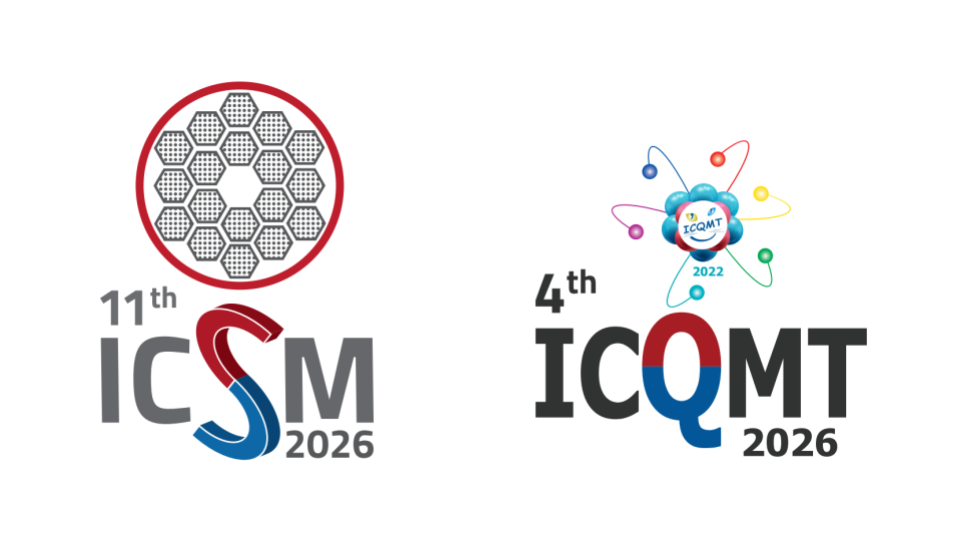This page for confirmed sessions is being updated frequently. Last update was made 25th October . Keep updated!
Plenary Speakers
Ivan Bozovic
Ivan Bozovic received his PhD in Solid State Physics from Belgrade University, Yugosla-via, where he was later elected a professor and the Physics Department Head. After moving to USA in 1985 he worked at Stanford University, the Varian Research Center in Palo Alto, California, and in Oxxel, Bremen, Germany. Since 2003, he is the MBE Group Leader at Brookhaven National Laboratory, and since 2014 also an Adjunct Professor at Yale University.
He is a Member of European Academy of Sciences, Foreign Member of the Serbian Academy of Science and Arts, Fellow of APS, and Fellow of SPIE. He received the Bernd Matthias Prize for Superconducting Materials, SPIE Technology Award, the M. Jaric Prize, the BNL Science and Technology Prize, was Max Planck and Van der Waals Lecturer, and was elected two times as a Gordon and Betty Moore Foundation Principal Investigator.
Ivan’s research interests include basic physics of condensed states of matter, novel electronic phenomena including unconventional superconductivity, innovative methods of thin film synthesis and characterization, quantum materials, and nano-scale physics. He has published 11 research monographs and over 300 research papers, including 30 in Science and Nature journals.
Abstract
On the road to room-temperature superconductivity:
the lessons learned from cuprates
Ivan Božović 1,2
1Brookhaven National Laboratory
2Department of Chemistry, Yale University
The most important question about superconductivity in cuprates — why Tc is so high? — is still open. Our experiments target this question. We have studied in detail over two thousand cuprate films synthesized using atomic-layer-by-layer molecular beam epitaxy. The precise dependences of their key physical properties on doping, temperature, and external fields contain a wealth of information and constrain the theory tightly. Some key conclusions are as follows. In the normal metallic state above Tc, the rotational symmetry of the electron fluid is always spontaneously broken — the so-called “electronic nematicity” — unlike in standard metals that behave like Fermi Liquids. The shot noise measurement of tunneling current show that a large fraction of carriers is paired at temperatures well above Tc and at energies well above the apparent superconducting gap. THz spectroscopy shows that in the superconducting state, even at the lowest temperature, superfluid contains only a fraction of electrons, while the rest stays ‘normal’; tracks Tc the superfluid fraction, smoothly decreasing to zero with overdoping. Altogether, the superconducting state cannot be described by the standard Bardeen-Cooper-Schrieffer theory, anywhere in the phase diagram. Even the insulating state on the underdoped side is quite unusual, with mobile charge clusters formed by localized pairs. All these features are quite exceptional and point to a new picture of superconductivity in cuprates. This, in turn, galvanizes the quest for new high-Tc superconductors.
Nature 572, 493 (2019); 547, 432 (2017); 536, 309 (2016); 472, 458 (2011); 455, 782 (2008); 422, 873 (2003). Science 361, 479 (2018); 326, 699 (2009); 316, 425 (2007); 297, 581 (2002). Nature Materials 12, 877 (2013); 12, 387 (2013); 12, 1019 (2013); 12, 47 (2013); 11, 850 (2012). Nature Physics 15, xx (2019); 10, 256 (2014); 7, 298 (2011). Nature Nanotechnology 14, 44 (2019); 9, 443 (2014); 5, 516 (2010). Nature Communications 9, 5210 (2018); 2, 272 (2011). Phys. Rev. Letters 122, 027003 (2019); 106, 237003 (2011); 102, 107004 (2009); 101, 247004 (2008); 93, 157002 (2004); 89, 107001 (2002). Proc. Nat. Acad. Sci. 113, 4284 (2016); 107, 8103 (2010).
Ernst Wolfgang Stautner

Wolfgang Stautner is the most senior and experienced cryogenics engineer at General Electric and Works in the Electromagnetics and Superconductivity Laboratory at GE Global Research. He has been active in Industry and Research in the field of cryogenics and superconductivity for more than 38 years which have resulted in more than 55 publications and to date 60 patent applications.
He received his M.Sc. degree in Process Engineering in 1977 and started his career at the Institute of Technical Physics (ITP) of the Karlsruhe Research Center (now KIT), Germany’s largest research facility, where he had the opportunity to learn in depth about cryogenics and superconducting magnet technology while working on the European Tokamak coil for nuclear fusion for the international Large Coil Task program. He was also heavily involved in quench stability considerations and cooldown calculations.
In 1982 he was invited to join Bruker Analytics in Karlsruhe, Germany, to create, establish and manage the cryogenics department, leading a team of physicists, engineers, technicians and designers. In this role he designed, developed and installed NMR and MRI magnets from bore sizes of 50 mm to 1000 mm and fields from 0.5 to 18 Tesla.
In 1996 he joined Oxford Magnet Technology, Oxford, UK, (now Siemens PLC) to work on the first open conduction-cooled MRI magnet based on HTS conductors. In addition to providing technical expertise for whole-body MRI magnets, he assumed the role of Project and Design Manager and led the development of the world’s first Pulse Tube Cooler with a cooling capacity of 1.4 W @ 4.3 K. In parallel, he pursued his passion for creative novel technical designs by completing his Design Management studies at the German Steinbeis Center (RKW).
In 2000 he became the 1st Principal Technology Engineer at Siemens Magnet Technology. In this role he designed and developed low cryogen whole-body MRI magnets, which drastically reduced the helium bath inventory. As head of the Technology Group at Siemens and a member of the Board of Managers, he drove the MRI business towards market success by focusing on “next generation” MRI magnets. After being promoted in 2004, he assumed the role of Principal Physicist.
At GE his cryogenic research activities focused on the new generation of whole-body MRI magnet systems by bringing sustainability efforts and “Green Technology” to a new level, developing dedicated scanners both for extremities with novel superconductors and for polarizing systems to study changes in the metabolism. He developed cryogenics for large scale superconducting machinery, e.g. for Wind, Marine, Hydro and Aviation applications. Further topical research in cryogenics included novel thermosiphon designs, heat pipes and other cryo components as well as driving cryogenic technology for LNG and the development of specialty cryocoolers.
He continues to encourage university students and share his knowledge with them. He also acts as a reviewer and referee for IEEE, DOE and is an invited panelist, session chair and plenary speaker at superconductivity and cryogenic conferences.
Abstract
To be announced !
Eugenio Coronado
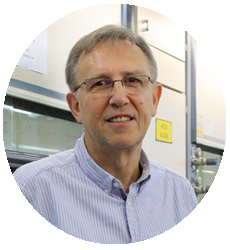 Eugenio Coronado is Professor of Inorganic Chemistry at the Universidad de Valencia and Director of the Institute for Molecular Science (ICMol) and of the European Institute of Molecular Magnetism (EIMM). Expert in Molecular
Eugenio Coronado is Professor of Inorganic Chemistry at the Universidad de Valencia and Director of the Institute for Molecular Science (ICMol) and of the European Institute of Molecular Magnetism (EIMM). Expert in Molecular
Magnetism, his recent research interests lie in the areas of Molecular Spintronics, quantum computing and 2D magnetic materials. To develop these research lines he has been financed by the European Research Council (ERC) since 2009 with the ERC Advanced grants SPINMOL and MOL-2D.
With over 600 publications amassing >30.000 citations and an H-index of 84, his scientific impact has been recognized in Spain and abroad through various research prizes. That includes the Prize of research in New Technologies “Rey Jaume I” (2003), the National Prize of research in Chemical Sciences (2009), the medal of the Spanish Royal Society of Chemistry (2009) and the medal of the Royal Society of Physics (2019), among others. In Europe he has been nominated member of the Academia Europaea (2009) and has been the recipient of a Van Arkel Chair in the Leiden Institute of Chemistry (2003) and a “Blaise Pascal” International Chair in France (2014).
Abstract
To be announced !
Jun-ichi Shimoyama
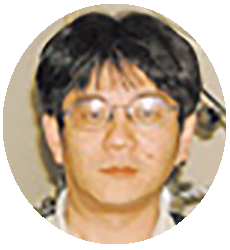 TBA
TBA
Abstract
To be announced !
Joe D. Thompson
 TBA
TBA
Abstract
To be announced !
Half Plenary Speakers
Wolfgang Wernsdorfer
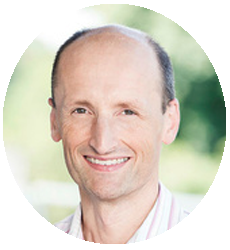 TBA
TBA
Abstract
To be announced !
Jaume Veciana
 TBA
TBA
Abstract
To be announced !
Sadamichi Maekawa
 TBA
TBA
Abstract
To be announced !
Valerii Vinokour
 Valerii Vinokur, a Senior Scientist and Distinguished Argonne Fellow at Argonne National Laboratory, USA received his PhD in 1979 at the Institute of the Solid State Physics RAS, in Chernogolovka, Russia. Research interests include vortex physics, superconductivity, quantum phase transitions, quantum transport, topological matter, disordered materials, out of equilibrium phenomena, ultraquantum thermodynamics, and mesoscopic physics. He is a Fellow of the American Physical Society and a Member of Norwegian National Academy of Science and Letters. He is a Laureate of the International John Bardeen Prize, Abrikosov Prize, and a recipient of the Alexander von Humboldt Research Award.
Valerii Vinokur, a Senior Scientist and Distinguished Argonne Fellow at Argonne National Laboratory, USA received his PhD in 1979 at the Institute of the Solid State Physics RAS, in Chernogolovka, Russia. Research interests include vortex physics, superconductivity, quantum phase transitions, quantum transport, topological matter, disordered materials, out of equilibrium phenomena, ultraquantum thermodynamics, and mesoscopic physics. He is a Fellow of the American Physical Society and a Member of Norwegian National Academy of Science and Letters. He is a Laureate of the International John Bardeen Prize, Abrikosov Prize, and a recipient of the Alexander von Humboldt Research Award.
Abstract
To be announced !
Emre Erdem
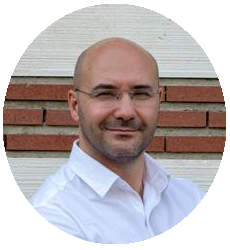 TBA
TBA
